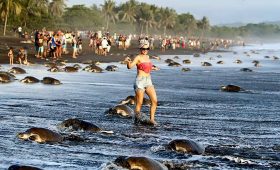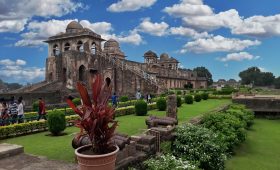Exploring Gran Parque Natural Topes de Collantes
Gran Parque Natural Topes de Collantes, located in the Escambray Mountains of Cuba, offers a rich tapestry of natural beauty and cultural history. This national park is a haven for those who appreciate lush landscapes, diverse wildlife, and a touch of Cuban heritage. Here’s what you need to know to make the most of your visit.
Natural Wonders and Trails
The park’s landscape is defined by jungle-covered limestone mountains, known as mogotes, and features a network of trails that cater to all levels of hikers. While the highest peak, Pico de San Juan, is off-limits due to its location in a military zone, there are plenty of other trails to explore.
Waterfalls and Scenic Spots
Among the park’s highlights are its waterfalls. El Nicho is particularly famous for its series of cascades and clear blue pools, perfect for a refreshing dip. The Salto de Caburní, a 75-meter waterfall, is accessible via a 7-kilometer roundtrip hike. The trail starts near the Kurhotel Escambray and offers a rewarding swim in the pool below the falls.
Guided Adventures
For those looking to delve deeper into the park’s offerings, hiring a local guide is recommended. Some trails require a guide or group tour, as the Cuban government restricts unsupervised hiking to protect both the environment and visitors. The Sendero La Batata trail leads to a cave with an underground creek, where you can swim. Remember to bring sandals for navigating the cave’s rocky terrain.
Cultural and Historical Insights
The park is not just about natural beauty; it also offers a window into Cuba’s past. During the Cuban Revolution, anti-Batista rebels took refuge in these mountains. Later, CIA-sponsored anti-Castro rebels hid here as well. The Museo de la Lucha Contra Los Bandidos in nearby Trinidad documents these historical events.
Coffee and Community
Exploring the local coffee plantations is a must. Here, you can learn about traditional coffee production methods and savor some of Cuba’s renowned brews. The surrounding rural communities offer a chance to experience authentic Cuban life, with opportunities to interact with locals and enjoy traditional cuisine.
Practical Information
Best Time to Visit
The ideal time to explore the park is during the dry season, from November to April. This period offers pleasant weather and fewer rain-related disruptions. However, be prepared for crowds during peak tourist months.
Getting There
To reach Gran Parque Natural Topes de Collantes, fly into Havana and then take a domestic flight to Santa Clara. From there, it’s a scenic 3-4 hour drive to the park. The road from Cienfuegos through La Sierrita to San Blas is particularly picturesque, though the pavement ends near Matagua, making a Jeep advisable for further travel.
Local Transportation
Once in the park, getting around is best done with a guide. Alternatively, renting a bike offers a more adventurous way to explore. The main road to Topes de Collantes is steep but well-paved by Cuban standards. Be cautious of military zones, where hiking off-road is prohibited.
Summary of Facts
- Gran Parque Natural Topes de Collantes is located in Cuba’s Escambray Mountains.
- The park features jungle-covered limestone mountains, waterfalls, and caves.
- El Nicho and Salto de Caburní are notable waterfalls within the park.
- Historical sites related to the Cuban Revolution are nearby.
- Visitors can explore coffee plantations and local communities.
- The best time to visit is during the dry season (November to April).
- Access is via Havana and Santa Clara, with a scenic drive to the park.
- Guides are recommended for certain trails and activities.




